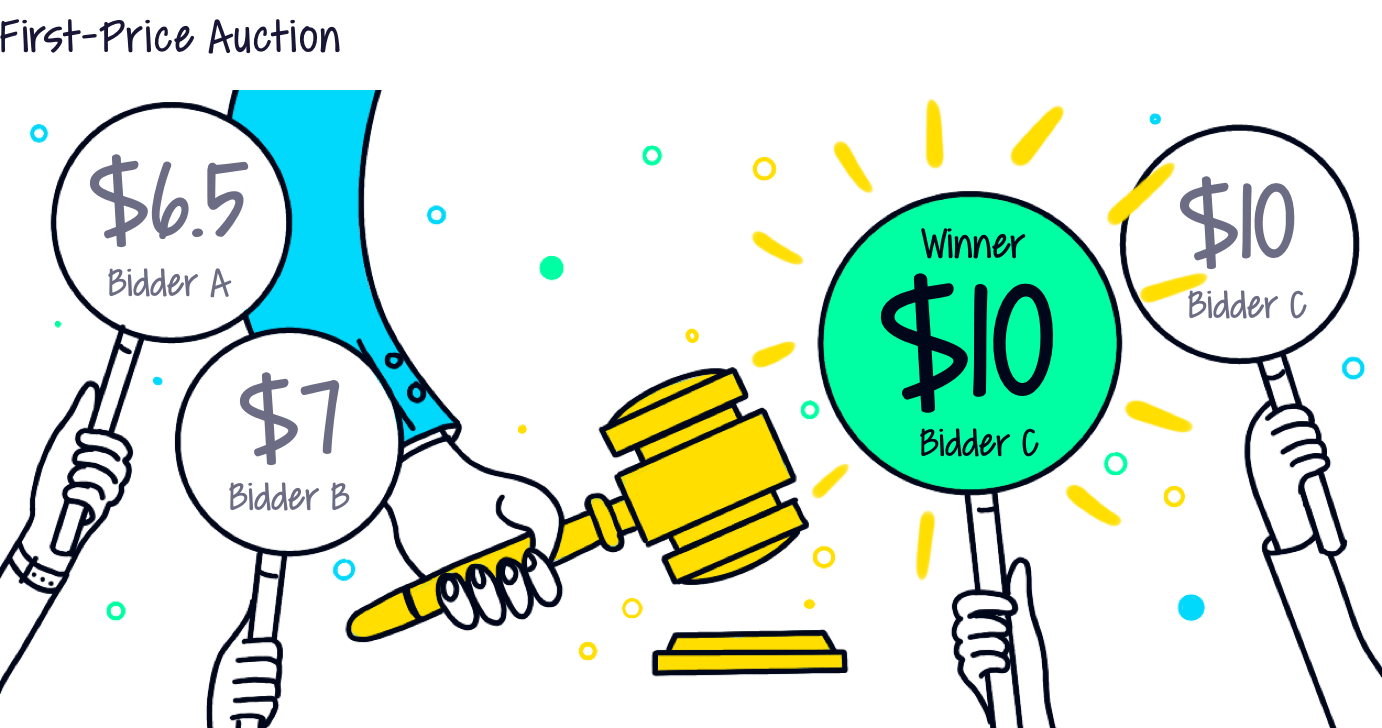Your source for everything mobile UA, from the basics to contentious standards, the glossary can help and inform both aspiring growth managers and experienced mobile app developers

Real-time bidding
Bid Shading – Making the Most of First-Price Auctions -> Page 1 of
Bid Shading – Making the Most of First-Price Auctions
Bid shading, a practice used by programmatic bidders to eliminate the risk of overbidding in the realm of first-price auctions, is gaining traction in the programmatic industry. Before getting to know bid shading better, let’s take a dive into a brief history of auction types in programmatic ad auctions.
Industrial Shift to First-Price Auctions
In RTB (Real-Time Bidding), multiple DSPs (demand-side platforms) compete to display an ad to a specific user on the publisher’s inventory (i.e., ad space within an app or website). As essentially all major SSPs (supply-side platforms) operate with the CPM model, their direct interest is to sell the inventory at a higher price to maximize the publisher’s ad revenue (and, obviously, their share of it).
For over a decade, all SSPs operated with the second-price auction model. In the second-price auction, a bidder would pay the price of the second-highest bid +$0.01.
This all began to change when SSPs started moving to the first-price auction model, where the highest bidder pays the full price of their bid. Google was the first to make the change to its entire inventory, and all exchanges followed suit within a couple of years.

While publishers and SSPs are the direct beneficiaries in the chain from first-price auctions, the buyers (advertisers and DSPs) are forced to be more cost-aware and not “overbid” the market by too much.
These days, the vast majority of SSPs are running on a first-price auction model. This forces buyers to face the dilemma of how high they should bid to win the auction without overpaying above its market value. The industry shift made DSPs adjust to the current situation and develop solutions to make sure they pay exactly as much as needed to win the impression.
What Is Bid Shading?
Bid shading is a practice used by programmatic bidders to predict the market price of auctions based on historical data and bid accordingly. By correcting your bid to be just high enough to win the auction, bid shading helps you avoid significant overpaying.
Having access to the historical record of what amount was spent in the past for the same bid—taking into consideration the app, placement, ad format, historical user data (for Android campaigns), and at what price the previous bids were lost—the algorithm on the DSP side can decide how much to bid on the impression.
The Essence of Bid Shading
To understand the essence of bid shading, imagine you need to take a bus that circulates once an hour.
Sometimes the bus arrives on time, but it can frequently arrive a few minutes earlier or later. If you miss the bus, you will have to wait an extra hour for the next one. At the same time, you don’t want to be at the bus stop too early and waste precious time.
Now, you have historical data that allows you to estimate how much earlier the bus can arrive, on average. Based on this historical data (that you painfully gathered showing up to the office an hour late), the natural thing to do is to arrive a couple of minutes earlier, just on time to catch the bus if it arrives before its scheduled time. And, worst case scenario, you’ll end up waiting a few more minutes if it’s running late.

Internally, we call this bus-shading. And no, it’s not weird that we obsess over industry terms and let it leak into our commute considerations—you don’t have to be so judgemental.
Bid shading works in the same way: The algorithm is adjusted to win the auction and helps advertisers avoid overpaying for the impression.
As such, DSPs can identify which users are likely to fit the “perfect” user criteria and bid higher while bidding lower on those who are still relevant but bring lower LTV.
Who Benefits from Bid Shading?
Among DSPs, only a few of the most sophisticated players can actually claim that they’ve implemented bid shading in their toolkit. These are the players who have gathered sufficient data throughout years of extensive work and research, armed with machine learning capabilities and having access to major data points needed to build high-probability prediction models.